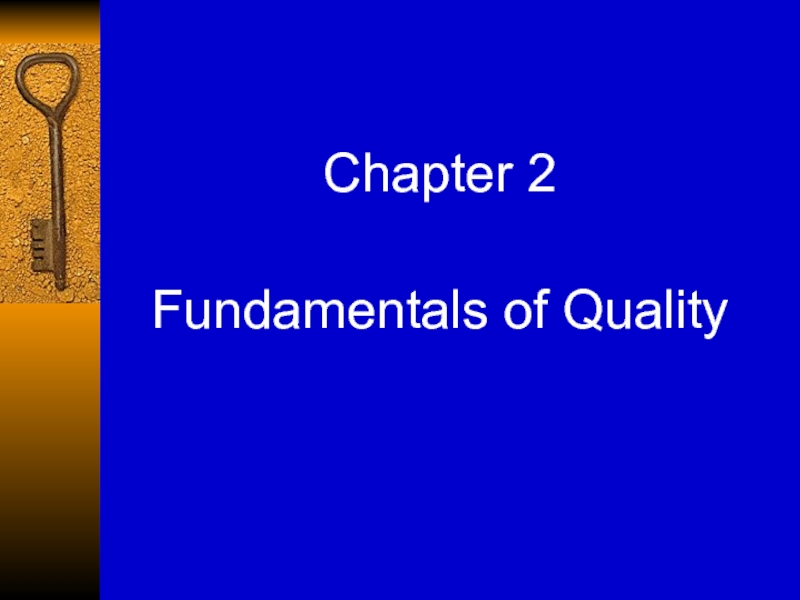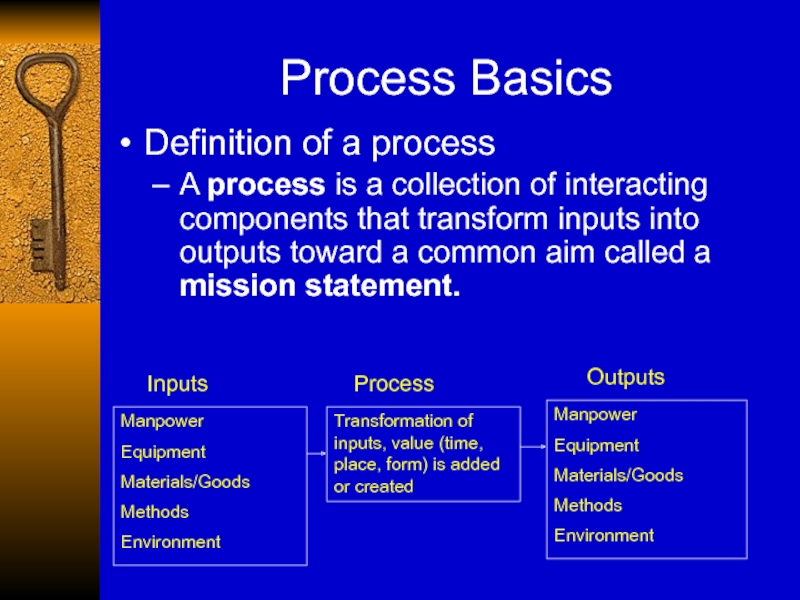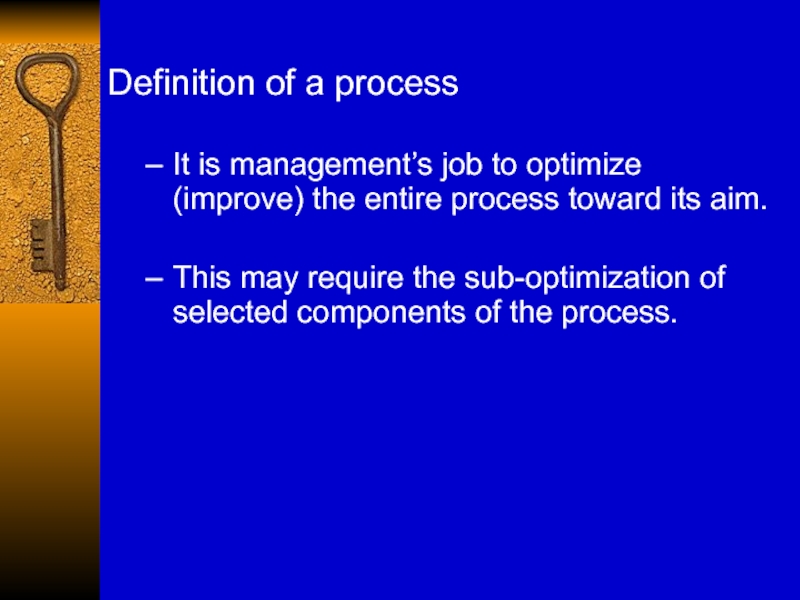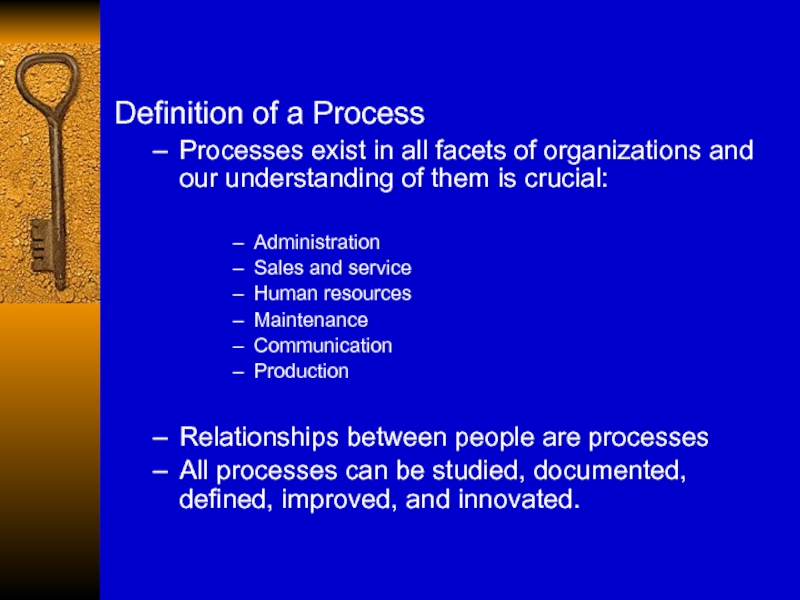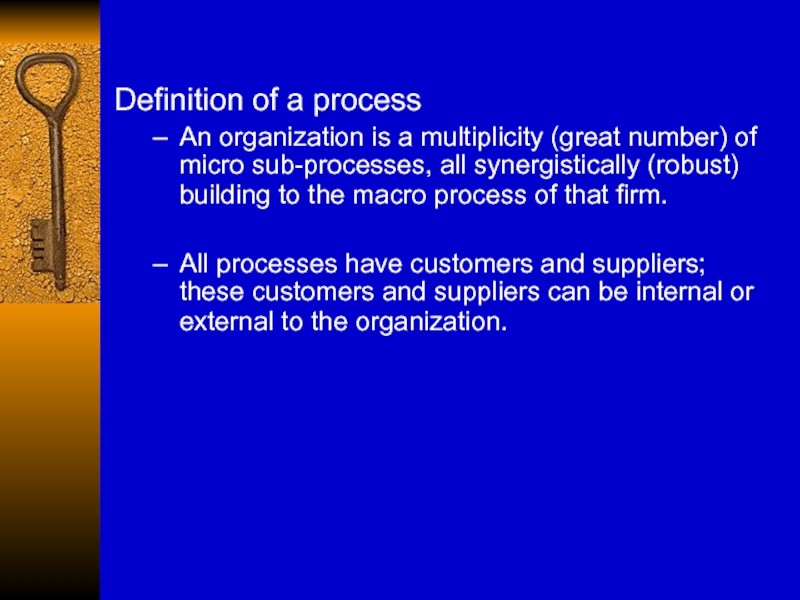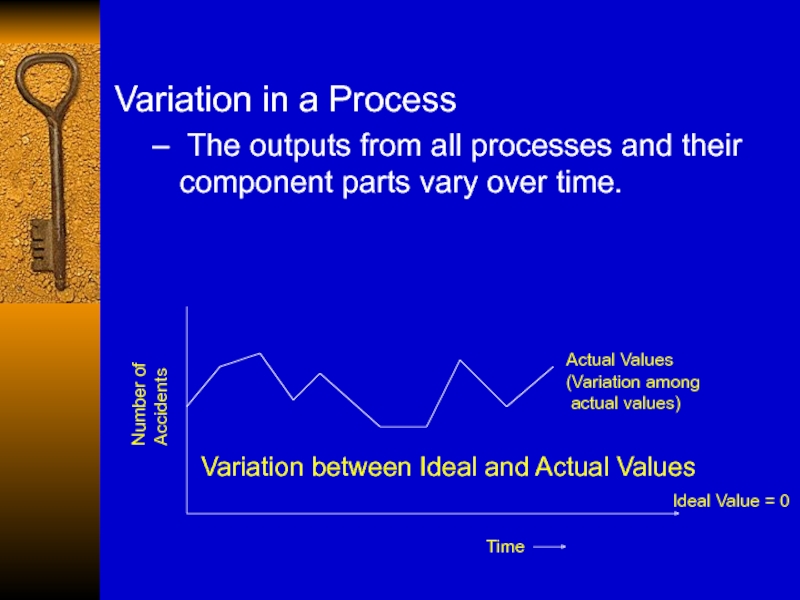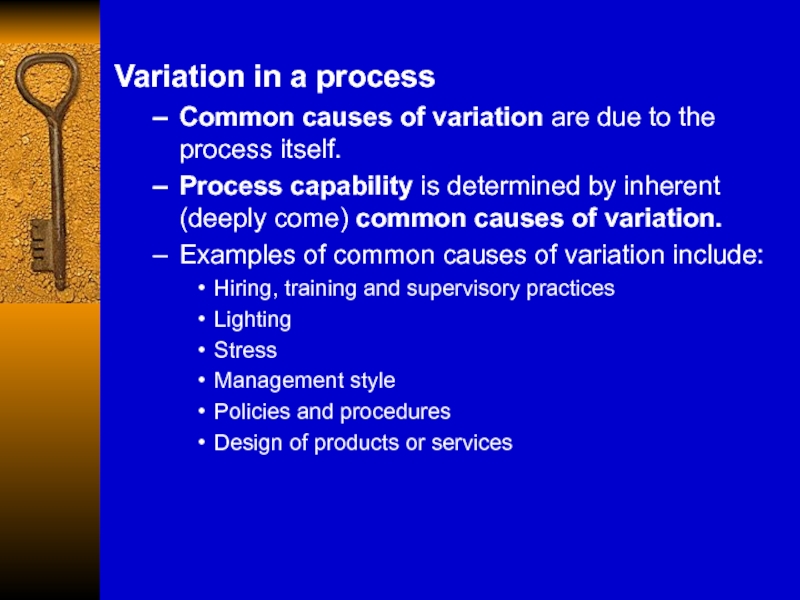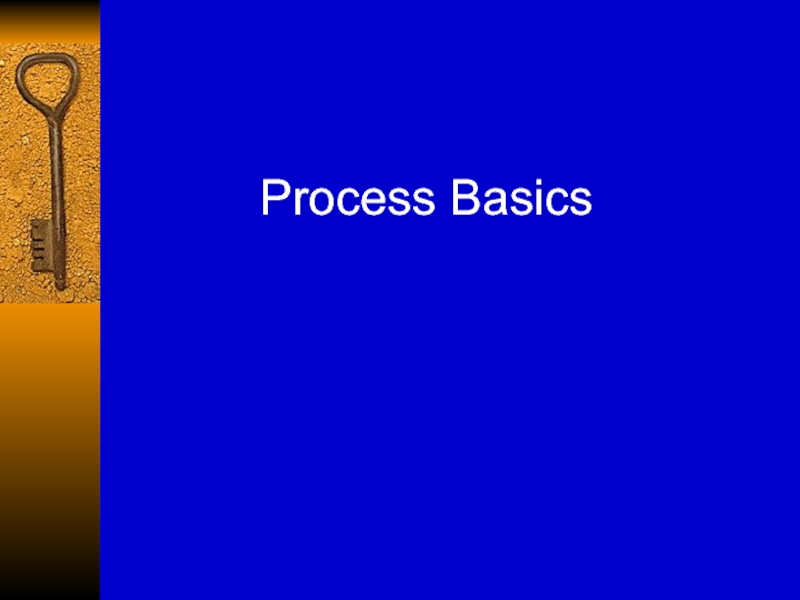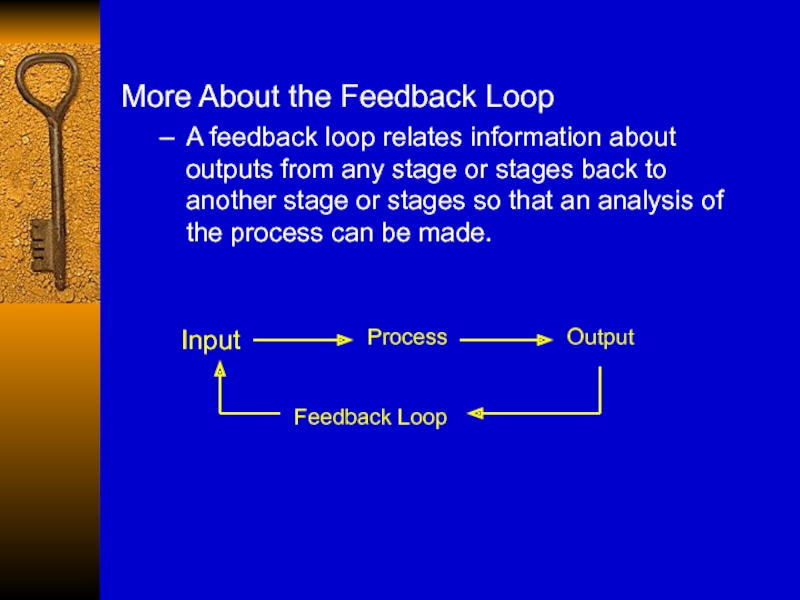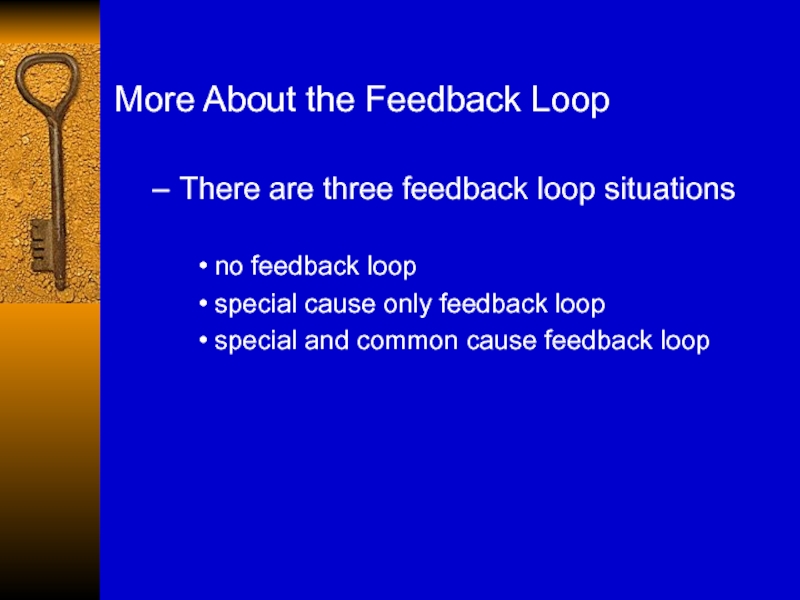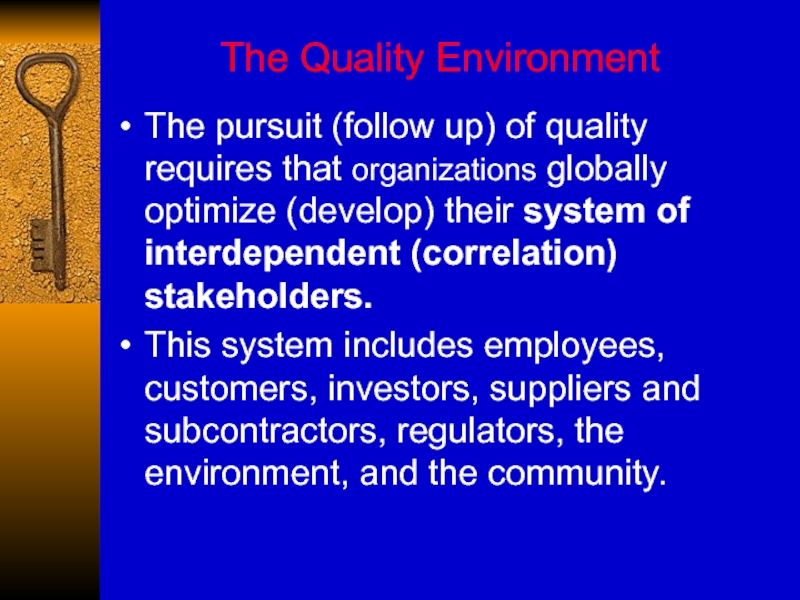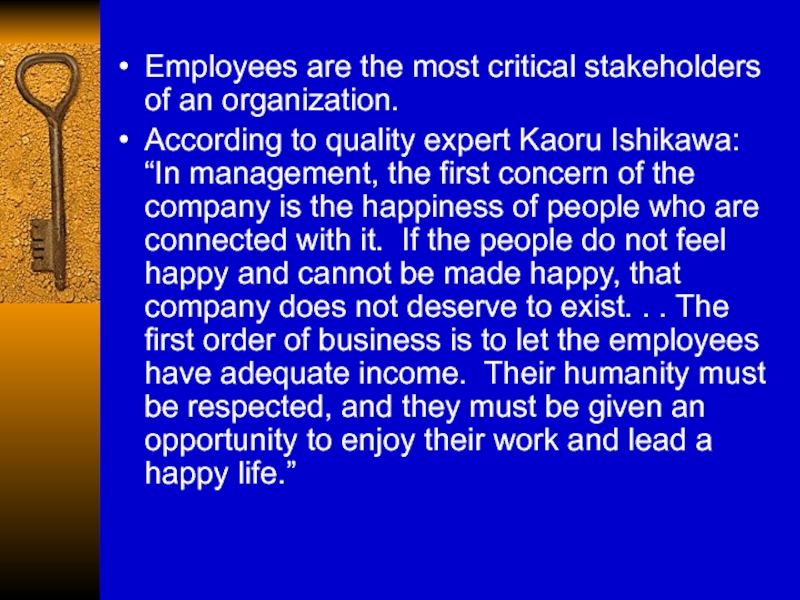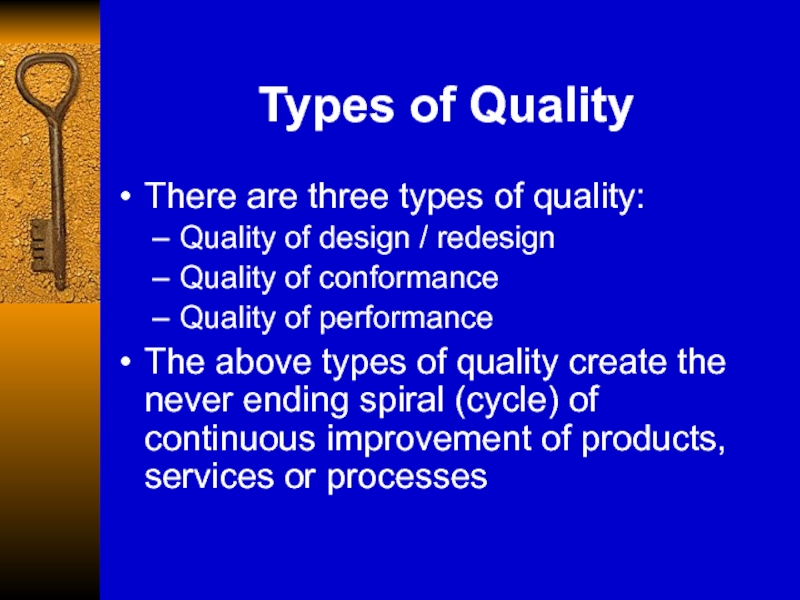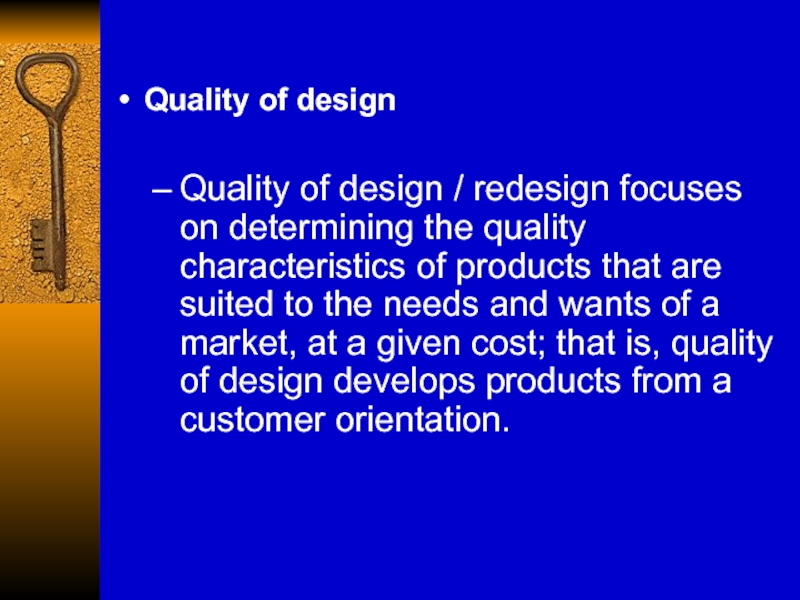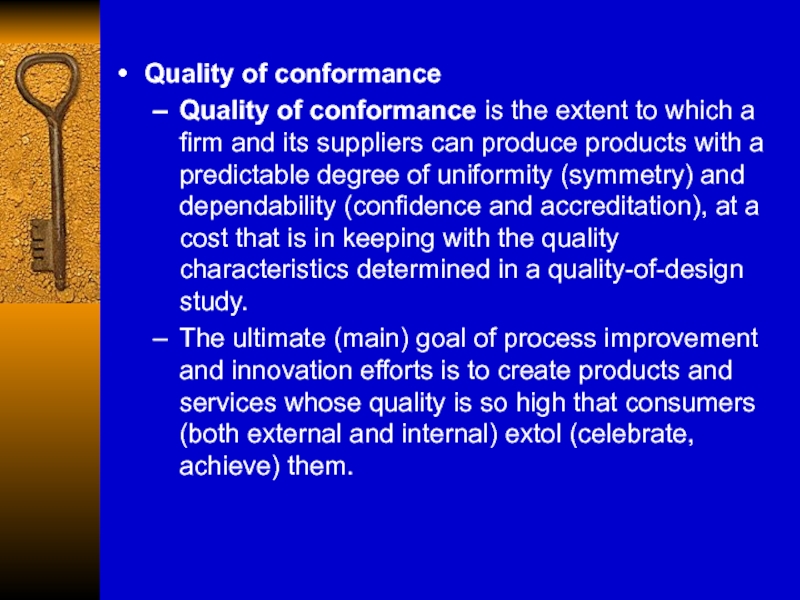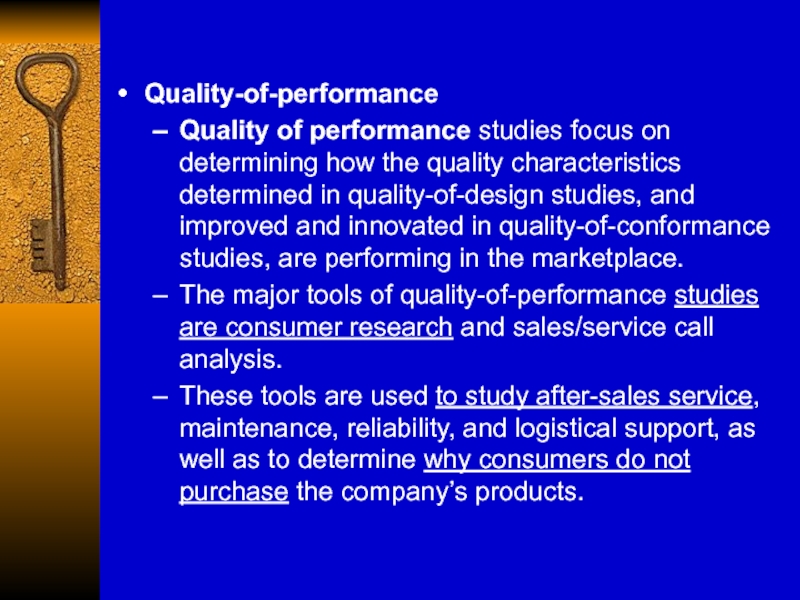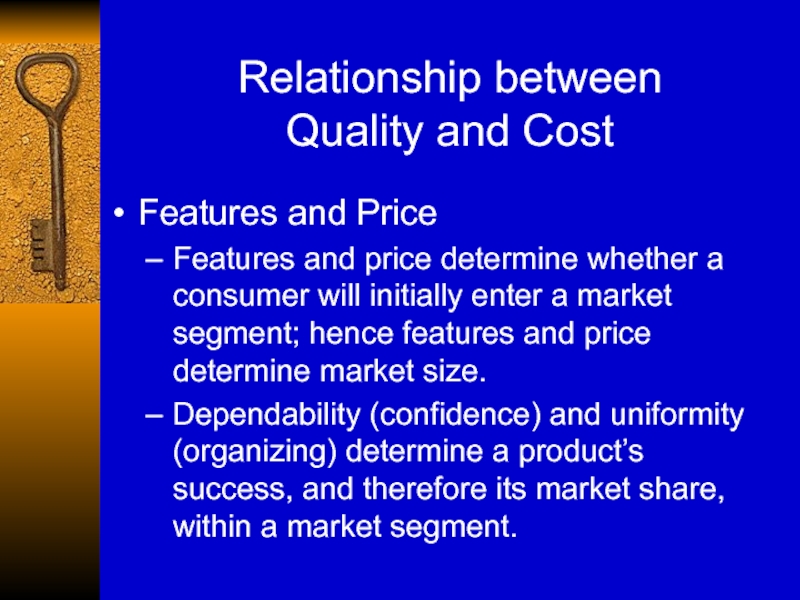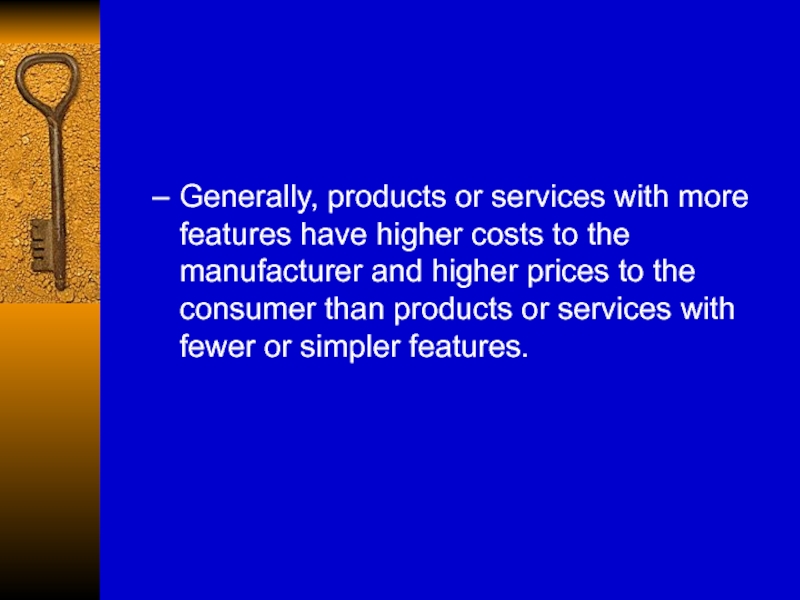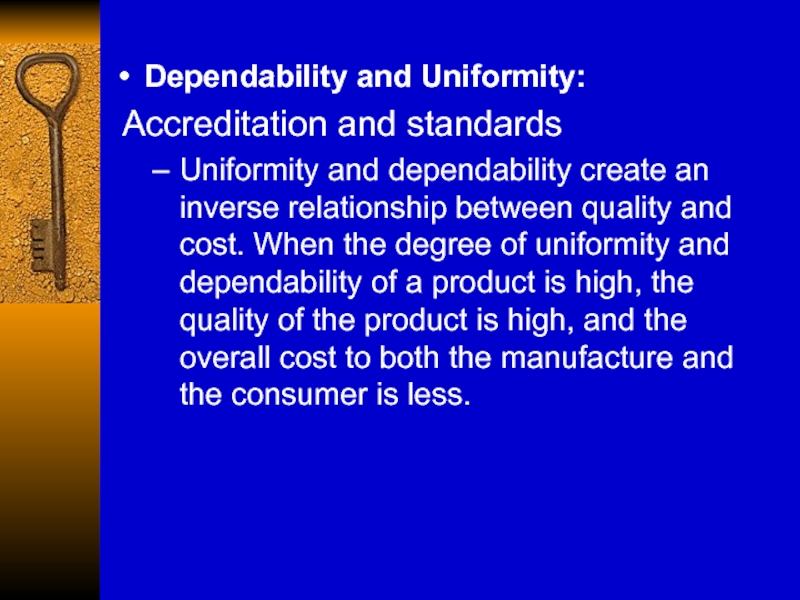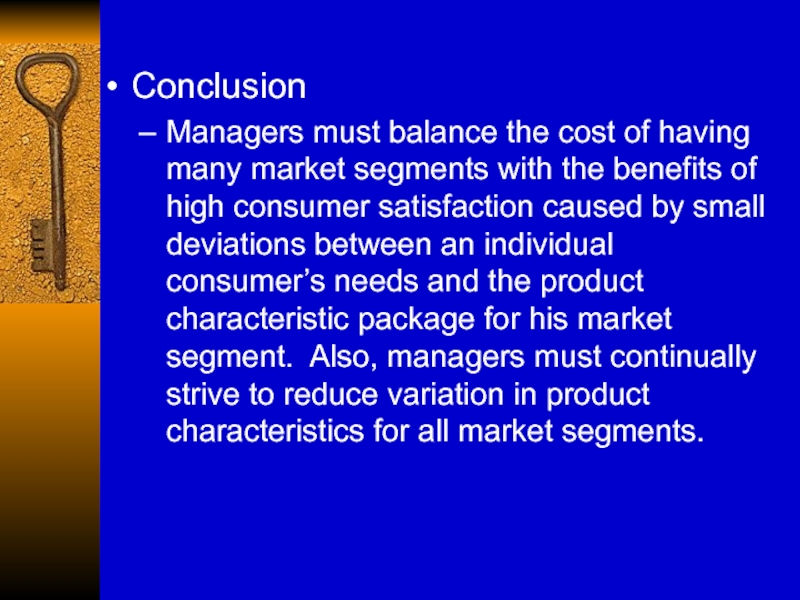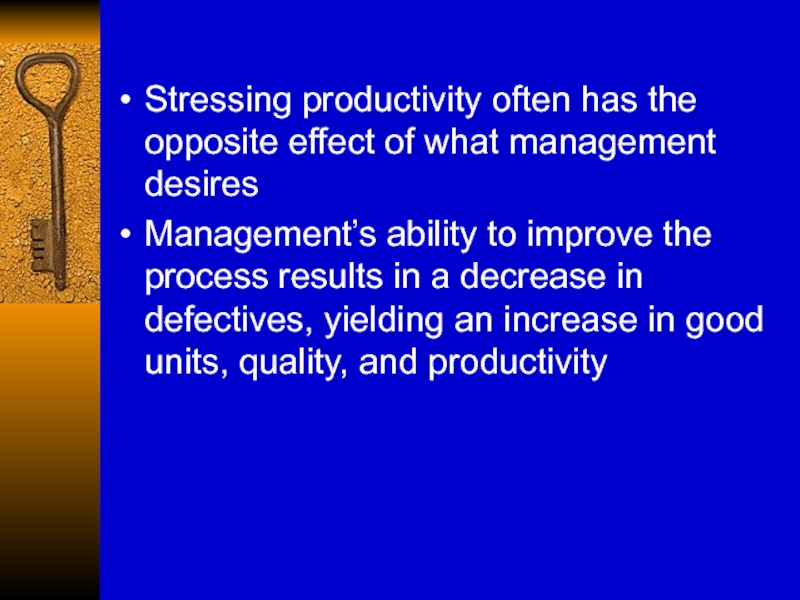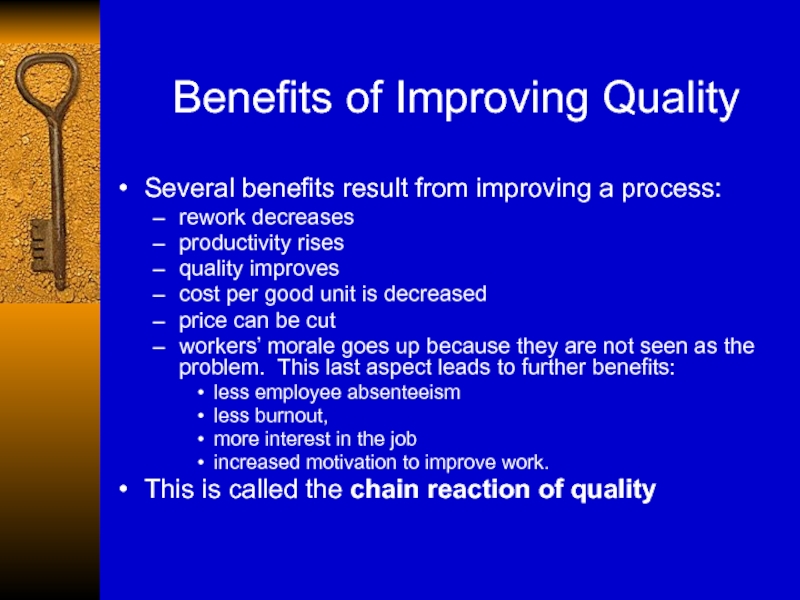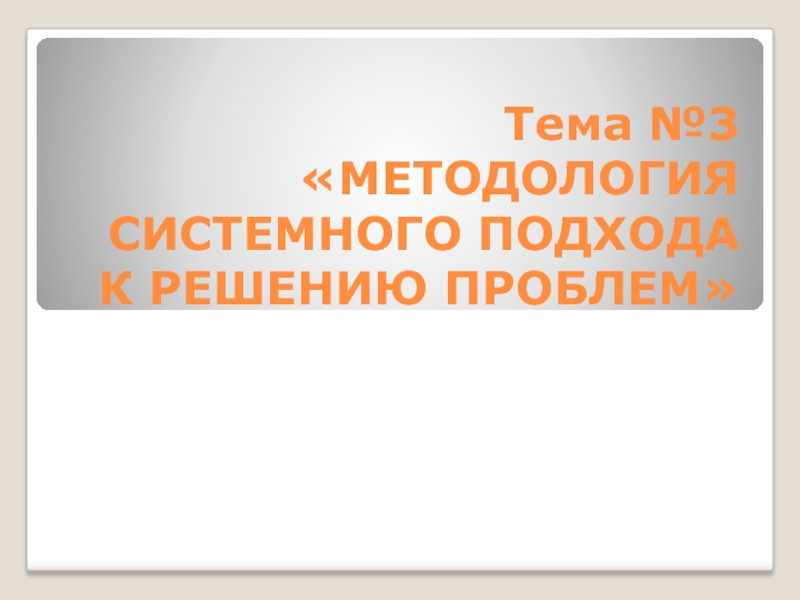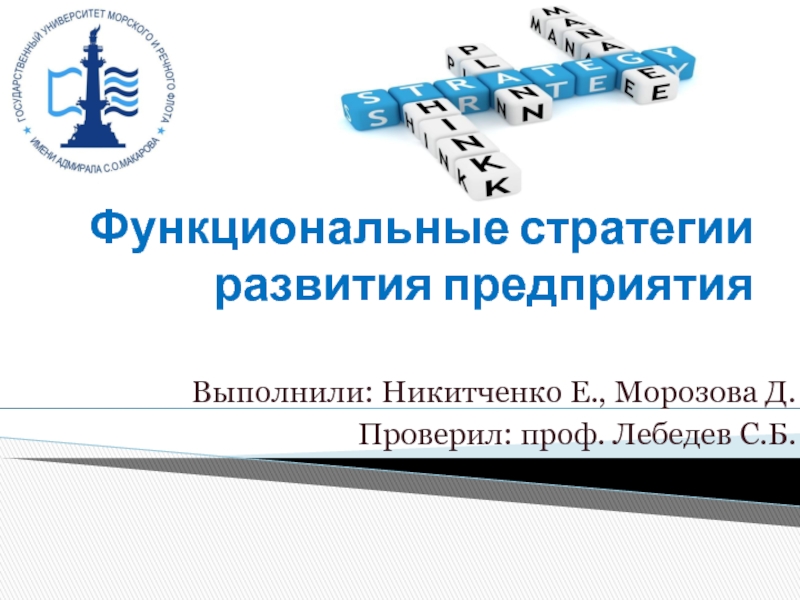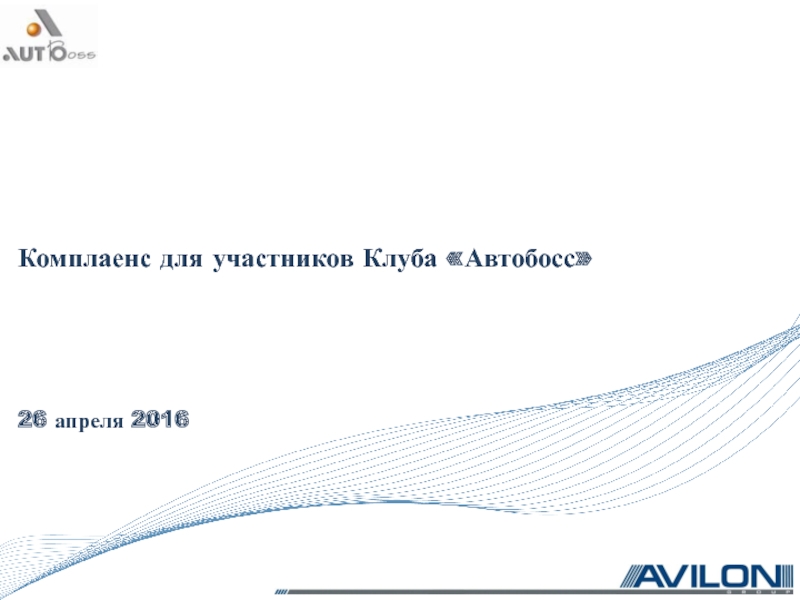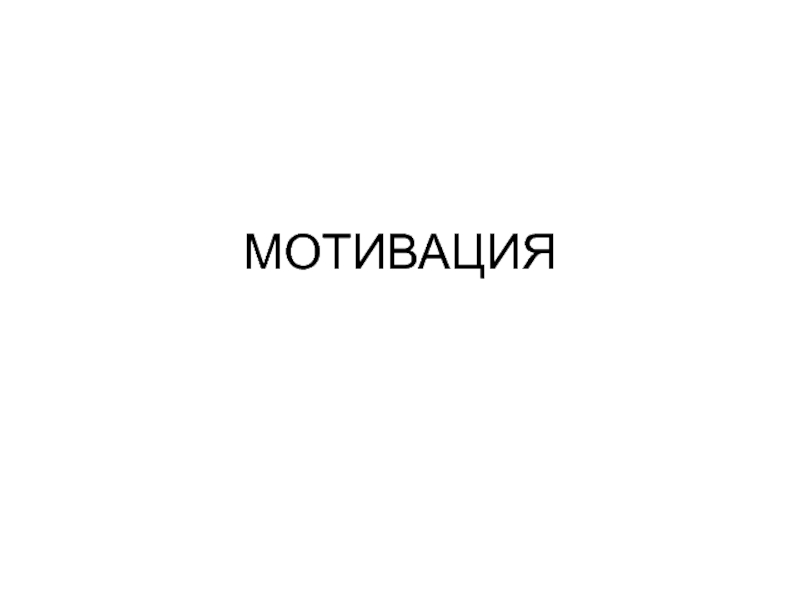- Главная
- Разное
- Дизайн
- Бизнес и предпринимательство
- Аналитика
- Образование
- Развлечения
- Красота и здоровье
- Финансы
- Государство
- Путешествия
- Спорт
- Недвижимость
- Армия
- Графика
- Культурология
- Еда и кулинария
- Лингвистика
- Английский язык
- Астрономия
- Алгебра
- Биология
- География
- Детские презентации
- Информатика
- История
- Литература
- Маркетинг
- Математика
- Медицина
- Менеджмент
- Музыка
- МХК
- Немецкий язык
- ОБЖ
- Обществознание
- Окружающий мир
- Педагогика
- Русский язык
- Технология
- Физика
- Философия
- Химия
- Шаблоны, картинки для презентаций
- Экология
- Экономика
- Юриспруденция
Fundamentals of quality. (Chapter 2) презентация
Содержание
- 1. Fundamentals of quality. (Chapter 2)
- 2. Process Basics Definition of a process
- 3. Definition of a process It is
- 4. Definition of a Process Processes exist in
- 5. Definition of a process An organization is
- 6. Variation in a Process The outputs
- 7. Variation in a process Special causes of
- 8. Variation in a process Common causes of
- 9. Variation in a process Employees cannot control
- 10. Process Basics
- 11. More About the Feedback Loop A feedback
- 12. More About the Feedback Loop There
- 13. The Quality Environment The pursuit (follow up)
- 14. Employees are the most critical stakeholders of
- 15. Types of Quality There are three types
- 16. Quality of design Quality of
- 17. Quality of design / redesign Quality
- 18. Quality of conformance Quality of conformance is
- 19. Quality-of-performance Quality of performance studies focus on
- 20. Relationship between Quality and Cost Features
- 21. Generally, products or services with more features
- 23. Dependability and Uniformity: Accreditation and standards
- 24. Conclusion Managers must balance the cost
- 25. Stressing productivity often has the opposite effect
- 26. Benefits of Improving Quality Several benefits result
Слайд 2Process Basics
Definition of a process
A process is a collection of
Manpower
Equipment
Materials/Goods
Methods
Environment
Inputs
Transformation of inputs, value (time, place, form) is added or created
Process
Manpower
Equipment
Materials/Goods
Methods
Environment
Outputs
Слайд 3Definition of a process
It is management’s job to optimize (improve) the
This may require the sub-optimization of selected components of the process.
Слайд 4Definition of a Process
Processes exist in all facets of organizations and
Administration
Sales and service
Human resources
Maintenance
Communication
Production
Relationships between people are processes
All processes can be studied, documented, defined, improved, and innovated.
Слайд 5Definition of a process
An organization is a multiplicity (great number) of
All processes have customers and suppliers; these customers and suppliers can be internal or external to the organization.
Слайд 6Variation in a Process
The outputs from all processes and their
Time
Number of
Accidents
Actual Values
(Variation among
actual values)
Ideal Value = 0
Variation between Ideal and Actual Values
Слайд 7Variation in a process
Special causes of variation are due to events
Examples could include (if they are not part of the system):
New raw materials
New employee
A new operator
Слайд 8Variation in a process
Common causes of variation are due to the
Process capability is determined by inherent (deeply come) common causes of variation.
Examples of common causes of variation include:
Hiring, training and supervisory practices
Lighting
Stress
Management style
Policies and procedures
Design of products or services
Слайд 9Variation in a process
Employees cannot control a common cause of variation.
Слайд 11More About the Feedback Loop
A feedback loop relates information about outputs
Input
Process
Output
Feedback Loop
Слайд 12More About the Feedback Loop
There are three feedback loop situations
no
special cause only feedback loop
special and common cause feedback loop
Слайд 13The Quality Environment
The pursuit (follow up) of quality requires that organizations
This system includes employees, customers, investors, suppliers and subcontractors, regulators, the environment, and the community.
Слайд 14Employees are the most critical stakeholders of an organization.
According to
Слайд 15Types of Quality
There are three types of quality:
Quality of design /
Quality of conformance
Quality of performance
The above types of quality create the never ending spiral (cycle) of continuous improvement of products, services or processes
Слайд 16Quality of design
Quality of design / redesign focuses on determining
Слайд 17Quality of design / redesign
Quality of design studies begin with consumer
Next, specifications are prepared for the product concept.
Слайд 18Quality of conformance
Quality of conformance is the extent to which a
The ultimate (main) goal of process improvement and innovation efforts is to create products and services whose quality is so high that consumers (both external and internal) extol (celebrate, achieve) them.
Слайд 19Quality-of-performance
Quality of performance studies focus on determining how the quality characteristics
The major tools of quality-of-performance studies are consumer research and sales/service call analysis.
These tools are used to study after-sales service, maintenance, reliability, and logistical support, as well as to determine why consumers do not purchase the company’s products.
Слайд 20Relationship between
Quality and Cost
Features and Price
Features and price determine whether
Dependability (confidence) and uniformity (organizing) determine a product’s success, and therefore its market share, within a market segment.
Слайд 21Generally, products or services with more features have higher costs to
Слайд 23Dependability and Uniformity:
Accreditation and standards
Uniformity and dependability create an inverse
Слайд 24Conclusion
Managers must balance the cost of having many market segments
Слайд 25Stressing productivity often has the opposite effect of what management desires
Management’s
Слайд 26Benefits of Improving Quality
Several benefits result from improving a process:
rework
productivity rises
quality improves
cost per good unit is decreased
price can be cut
workers’ morale goes up because they are not seen as the problem. This last aspect leads to further benefits:
less employee absenteeism
less burnout,
more interest in the job
increased motivation to improve work.
This is called the chain reaction of quality
